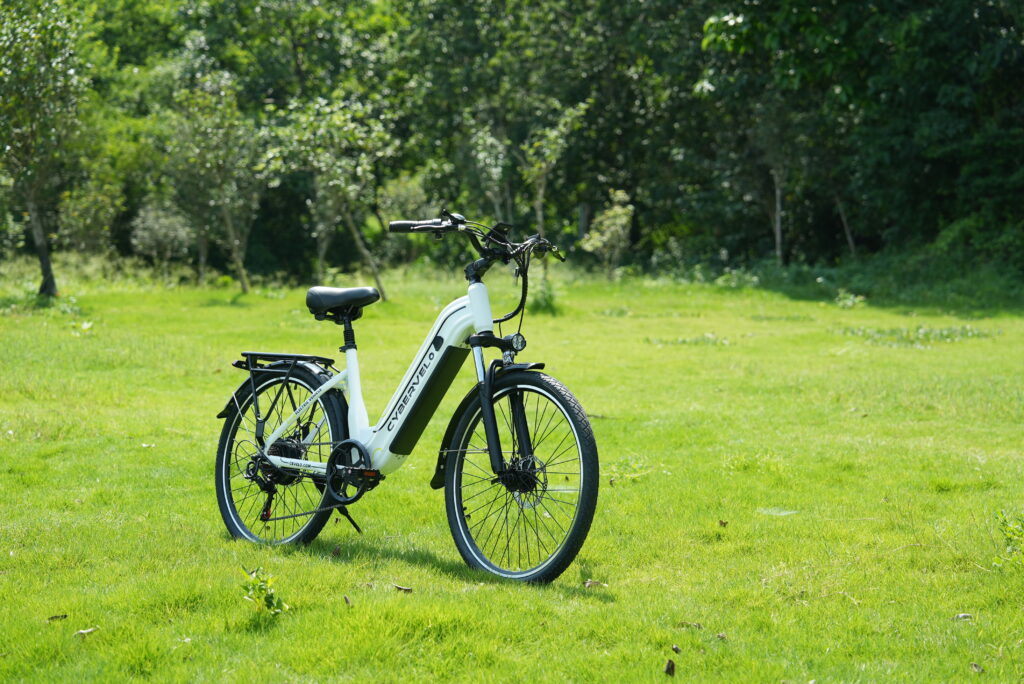The world of car insurance has remained relatively unchanged for decades. You pay a premium based on a general risk profile, and in return, an insurer promises to cover your losses in an accident. But a wave of technological innovation and societal shifts is set to radically transform this model. The simple, static policy is giving way to dynamic, personalized, and data-driven coverage that will change how we think about risk and protection on the road.
These changes aren’t some far-off sci-fi concept; they are happening now. From artificial intelligence processing claims in minutes to insurance rates that change based on your real-time driving behavior, the future is arriving faster than you might think. For drivers, understanding these trends is crucial for navigating the new landscape, saving money, and ensuring you have the right protection for a rapidly evolving world.
This article will explore the most significant trends shaping the future of car insurance policies. We’ll examine the rise of telematics, the impact of AI, the challenge of insuring autonomous vehicles, and how new environmental and social factors are rewriting the rules of the road.
1. The Rise of Telematics and Usage-Based Insurance (UBI)
Perhaps the most immediate and impactful trend is the move away from broad demographic-based pricing toward personalized, behavior-based models. This is made possible by telematics, the technology that allows insurers to monitor your actual driving habits.
Usage-Based Insurance (UBI) uses data collected from a smartphone app or a small device plugged into your car’s OBD-II port to create a detailed picture of you as a driver. Insurers no longer have to guess your risk level based on proxies like age and ZIP code. They can see it firsthand.
What Data Are They Collecting?
Telematics programs typically track a variety of specific behaviors, including:
- Hard Braking and Rapid Acceleration: Frequent, harsh stops and starts suggest aggressive or distracted driving.
- Speed: Consistently driving above the speed limit is a clear indicator of higher risk.
- Time of Day: Driving late at night, especially on weekends, is statistically riskier due to factors like fatigue and a higher likelihood of impaired drivers on the road.
- Mileage: The less you drive, the lower your exposure to risk. Pay-per-mile policies are a subset of UBI that charge a base rate plus a small fee for each mile driven.
- Distracted Driving: Some advanced smartphone apps can even detect phone handling while the car is in motion.
The Impact on Drivers
The primary benefit for drivers is fairness and control. Safe drivers are rewarded with significant discounts—sometimes up to 40%—for their good habits. This model empowers you to directly influence your premium. If you know that hard braking events increase your rate, you are incentivized to drive more smoothly and maintain a safer following distance.
However, this trend also introduces new considerations. Privacy is a major concern for many people, who may be uncomfortable sharing their location and driving data with a corporation. Furthermore, while good drivers save, risky drivers could see their rates increase. Insurers are still navigating the ethics of using this data, but the trend is clear: your driving, not just your demographic, will increasingly determine your cost.
2. Artificial Intelligence (AI) Streamlining the Entire Process
Artificial intelligence is the engine powering many of the coming changes in the insurance industry. Its ability to analyze vast amounts of data, identify patterns, and automate complex tasks is revolutionizing everything from underwriting to claims processing.
AI in Underwriting and Pricing
AI algorithms can analyze thousands of data points—far more than a human underwriter ever could—to create hyper-personalized risk profiles and pricing. This includes traditional factors, telematics data, and even external information like weather patterns and traffic density in your area. This allows for more accurate and dynamic pricing, where your premium could theoretically be adjusted on a monthly or even daily basis.
The AI-Powered Claims Experience
The claims process, often a slow and frustrating experience for customers, is being completely overhauled by AI. Here’s what the future looks like:
- Automated First Notice of Loss (FNOL): After an accident, you’ll open your insurer’s app. An AI-powered chatbot will guide you through the initial report, asking for key details and instructing you on what photos to take.
- AI Damage Assessment: You’ll use your phone to take pictures of the damage to your vehicle. AI image recognition software will instantly analyze the photos, identify the damaged parts, cross-reference them with a parts database, and generate a preliminary repair estimate within minutes.
- Instant Payouts: For minor claims, the AI can approve the claim and trigger an instant digital payment to your account, allowing you to schedule repairs immediately.
This “touchless claims” process reduces the time to settlement from days or weeks to mere minutes. It not only improves customer satisfaction but also significantly cuts down on administrative costs for insurers, a saving that can be passed on to policyholders.
3. The Autonomous Vehicle Conundrum
The arrival of self-driving cars represents the single biggest philosophical and logistical challenge the auto insurance industry has ever faced. The traditional model is built entirely on the concept of human error, which is responsible for over 90% of all accidents. When the human is no longer the driver, who is at fault when something goes wrong?
Shifting Liability: Driver vs. Machine
As vehicles move through the levels of automation (from Level 1 driver-assist to Level 5 fully autonomous), the question of liability becomes incredibly complex.
If a semi-autonomous car in Level 3 (“eyes off”) mode causes a crash, is the driver at fault for not taking over in time, or is the manufacturer at fault for a software failure?
Insurers and lawmakers are grappling with this question. The future likely holds a shift from personal auto insurance to a model more focused on product liability. In a world of fully autonomous vehicles, you may not need a personal liability policy. Instead, the manufacturers (like Tesla, Waymo, or GM), software developers, and fleet operators who own and manage the vehicles will carry massive commercial insurance policies to cover system failures.
The Transition Period
The transition will be messy. For the next couple of decades, our roads will feature a mix of human-driven cars, semi-autonomous vehicles, and fully autonomous ones. This creates a complex risk environment. Insuring a Level 3 vehicle that requires a human to be an attentive “backup driver” is a unique challenge. Insurers will need to develop hybrid policies that can account for both human and machine error, and the claims process for accidents involving autonomous tech will be far more complicated, potentially involving lengthy investigations to determine if the fault lies with a person or a line of code.
4. The Impact of Climate Change and Severe Weather
Climate change is no longer just an environmental issue; it’s a significant financial risk for the insurance industry. The increasing frequency and severity of extreme weather events—hurricanes, floods, wildfires, and hailstorms—are leading to a surge in comprehensive claims.
How Climate Risk Affects Your Premium
Insurers use sophisticated models to map climate risk. A car parked in a coastal area prone to flooding or a region with a history of severe hailstorms represents a much higher risk for a comprehensive claim than one in a temperate, stable climate. This is already being reflected in premiums.
- Geographic Rating: Your ZIP code will become an even more powerful rating factor as insurers use granular climate data to assess your location’s vulnerability to natural disasters.
- Higher Comprehensive Costs: The cost of comprehensive coverage, which protects against non-collision events like weather damage, is rising across the board to cover the increase in catastrophic losses.
- Incentivizing Resilience: In the future, you might see discounts for taking proactive measures, such as parking in a flood-resistant garage or using a hail-proof car cover.
This trend underscores the interconnectedness of our world. Environmental factors happening on a global scale will have a direct and measurable impact on the cost of insuring your vehicle.
5. Embedded and On-Demand Insurance
The final trend involves a fundamental shift in how insurance is purchased. Instead of a standalone product you shop for, insurance will become increasingly integrated or “embedded” directly into other transactions.
Insurance at the Point of Sale
Imagine buying a car, and the insurance is included as part of the financing or lease package, activated the moment you drive off the lot. Or consider renting a car through an app, and the necessary coverage for your trip is automatically added and priced based on your destination and planned route.
This model is more convenient for consumers and creates new distribution channels for insurers. Car manufacturers themselves are getting into the game. Tesla, GM, and Ford have all launched their own insurance products, leveraging the massive amounts of data from their connected cars to offer more competitive rates than traditional carriers can.
On-Demand Coverage
For those who don’t own a car but use ride-sharing or car-sharing services, the future is on-demand insurance. Why pay for a full-year policy if you only drive a few times a month? New startups are offering micro-policies that allow you to turn your coverage on and off from an app, paying only for the hours or days you actually need protection. This is ideal for city dwellers, occasional drivers, and participants in the gig economy.
Preparing for the Future: An Action Plan for Drivers
The changes coming to the auto insurance industry are significant, but they also bring opportunities. Here is how you can prepare to navigate this new world:
- Embrace Telematics (If It Fits): If you are a safe, low-mileage driver, don’t be afraid to try a UBI program. The potential savings are substantial. Ask about privacy policies and whether risky driving could increase your premium before you sign up.
- Prioritize Safety Technology: When buying your next car, pay close attention to its safety features. Vehicles with advanced driver-assistance systems (ADAS) like automatic emergency braking and lane-keeping assist are not only safer but will also command lower insurance premiums.
- Maintain Digital Literacy: Get comfortable using apps and digital platforms. The future of claims and policy management is online. Being able to navigate an app to file a claim or adjust coverage will become an essential skill.
- Stay Informed: Keep an eye on the evolving laws and regulations around autonomous vehicles and data privacy. Your rights and responsibilities as a driver are going to change.
- Shop Smarter, Not Harder: As pricing becomes more dynamic and personalized, the “best” insurer for you could change more frequently. Get in the habit of reviewing your options every six to twelve months, especially if your driving habits or life circumstances change.
The future of car insurance policies to be more personalized, more accurate, and more integrated into our lives than ever before. While it may require a shift in mindset, the ultimate goal is a fairer and more efficient system that better reflects the individual risks of every single driver on the road.



